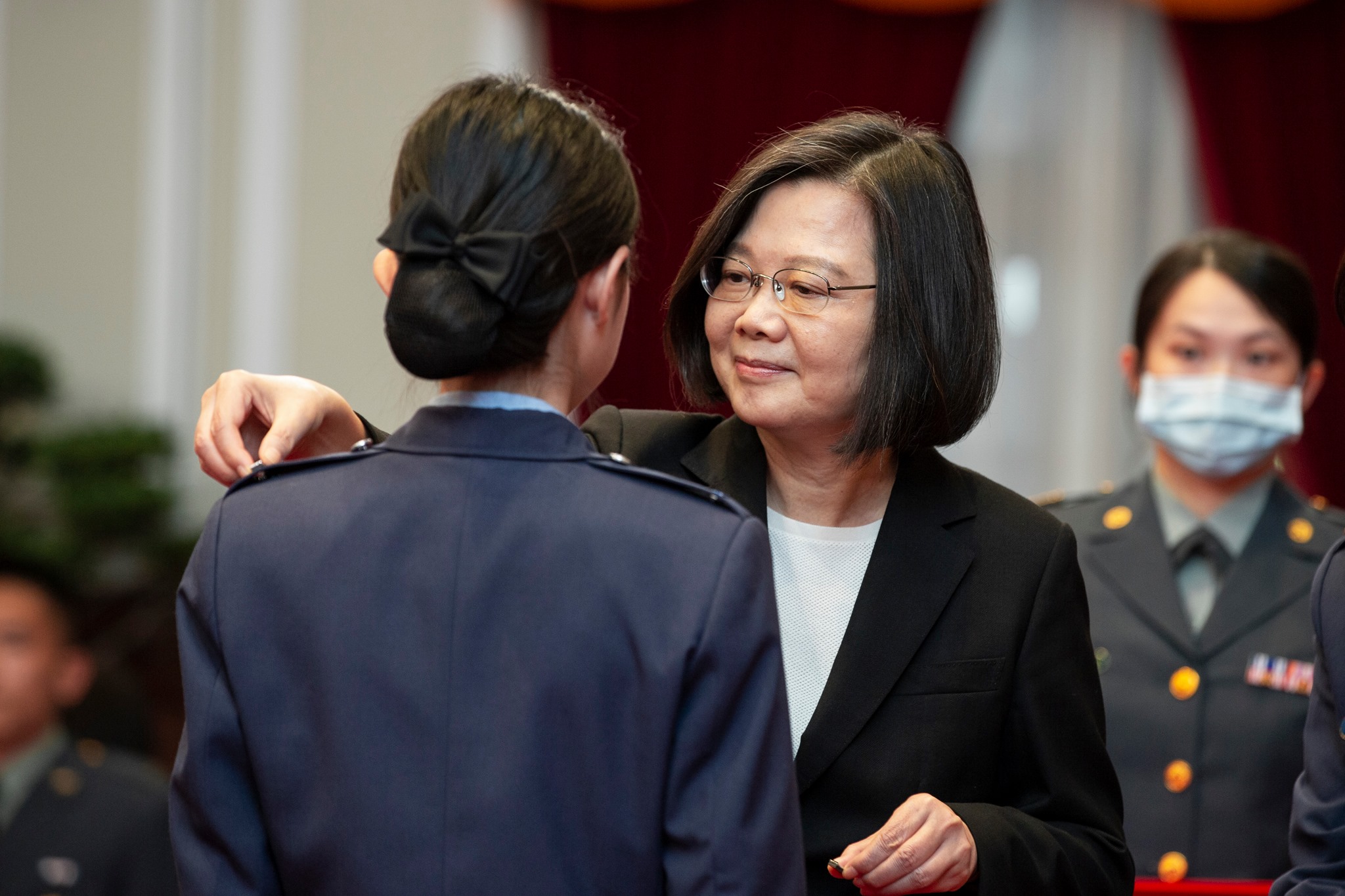With the KMT still struggling to get back on its feet and the Tsai administration not giving an inch on the ‘1992 consensus’ and ‘one China,’ Beijing now counts on smaller parties and civic groups to reinforce those notions with the Taiwanese public.
One of the classic ingredients in the recipe for political propaganda is repetition — convince your opponent (or erode his resistance) through the sustained reinforcement of a notion, or create new facts by saturating the environment with signals that reinforce the message. With its ideological allies in Taiwan, Beijing is intensifying its propaganda work on the so-called “1992 consensus” and “one China” in an effort to convince the Taiwanese public that their welfare depends on the government’s embrace of both.
Two sticking points in relations between Taiwan and China since the election of Tsai Ing-wen to the presidency in January 2016 have been her administration’s refusal to openly embrace the “one China” framework and its relative, the “1992 consensus” construct, which Beijing insists is a precondition for the resumption of dialogue in the Taiwan Strait. Despite President Tsai’s flexibility on those two issues — she has vowed to maintain the “status quo” under the Republic of China (ROC) constitutional framework and hasn’t denied the historical fact that negotiators from the two sides met in 1992 to discuss ways to resolve the conflict in the Taiwan Strait — Beijing has been in no mood to make concessions and ramped up its pressure on the Tsai administration.
Thus far, Beijing’s intransigence hasn’t succeeded in breaking President Tsai’s resistance, in large part because the Taiwanese public has not pressured her on those two issue and seems prepared to weather China’s retaliatory measures, such as they are. Moreover, most of the rhetoric on the necessity of recognizing the “1992 consensus” and making further concessions on “one China” has come from a much weakened opposition Kuomintang (KMT), which so far has been unable to find its footing after its disastrous showing in the 2016 elections.
Given its current travails, the KMT has temporarily lost some of its lustre as Beijing’s ostensible partner and “repeater station,” though I would argue that the mainstream KMT (e.g., under Ma Ying-jeou) often echoed Beijing’s position on the “1992 consensus” and “one China” — albeit with caveats — more to gain an advantage over its political adversaries than out of solid adherence to Beijing’s ideology. This contrasts with the “deep blue” elements within the KMT and the New Party, who are indeed ideologically committed to “one China” on Beijing’s terms (i.e., unification).
While the KMT rebuilds itself, and not knowing what the party will look like after the chairperson election later this year, an impatient Beijing has looked elsewhere to sustain its propaganda. The “repeater stations,” to use that analogy again, are now more scattered and active, all working toward the same goal: to keep the notions of “one China” and the “1992 consensus” alive in the public discourse and as a means to attack President Tsai. Propaganda needs oxygen, and if people stop repeating it, it is likely that its contents, not to mention its ability to shape the environment in one’s favor, will dissipate.
The “repeater stations” are now more scattered and active, all working toward the same goal: to keep the notions of “one China” and the “1992 consensus” alive in the public discourse and as a means to attack President Tsai.
Much of that work is now being carried by China’s United Front Work units, political warfare outfits operating domestically and abroad, the State Council’s Taiwan Affairs Office, as well as Chinese media and think tanks. In Taiwan, a segment of civil society, along with a handful of small political parties, are endeavoring to keep “one China” and the “1992 consensus” on life support, if not to give it a second chance.
Besides the old guard “deep blue” KMT of the Hung Hsiu-chu or Hau Pei-tsun cut, three other parties have acted as repeater stations: the aforementioned New Party, Chang An-le’s China Unification Promotion Party (CUPP), and the People Rich Party (民生黨) founded at the weekend. Mixed with those is a constellation of small organizations — some legitimate, others involved in criminal activity (Bamboo Union, Four Seas Gang and local thugs) — that can also be mobilized to hold protests and/or to intimidate Taiwanese society and politicians. Among the more active groups recently are the Concentric Patriot Association of the ROC, which works closely with the CUPP, as well as the Blue Sky Alliance (藍天行動聯盟), whose members have disrupted government meetings and social gatherings in recent weeks.
Worryingly, there are also signs that Beijing-controlled pro-unification organizations based in Hong Kong are now involving active in Taiwan and are collaborating with their counterparts here. In addition to the coordinated protests targeting young Hong Kong politicians during a visit to Taiwan in January, pro-Beijing group members from Hong Kong have visited Taiwan and interacted with individuals like the CUPP’s Chang An-le, the former fugitive who admits to having close ties with the TAO. Among those was a delegation of 17 individuals in late February led by Caring Hong Kong Power (愛港行動) convener Anna Chan (陳淨心), described as a “pro-Beijing campaigner,” under the guise of “tourism exchanges.” Founded in 2011, Chan’s organization Caring Hong Kong Power is a pro-government voice that operates outside the traditional pro-establishment camp, as Hong Kong Free Press reports.
Snapshot
China Unification Promotion Party
Since late 2015, Chang’s CUPP, which supports unification under the “one country, two systems” model, has mobilized supporters and gangsters to protest Tsai’s refusal to recognize the “1992 consensus,” provide protection for visiting Chinese officials, and intimidate civil society — often through physical assault (Chang’s son was involved in the clashes at Taiwan Taoyuan International Airport in January upon the arrival of Hong Kong activists).
People Rich Party
Depicting itself as a party for the young people, the People Rich Party, founded and led by pianist and composer Chang Mu-ting, says it wants to “effectively revive the Taiwanese economy, address the public’s economic concerns, insist on the ‘1992 consensus’ and implement the goal of national unification under the Additional Articles of the Constitution of the ROC” — language that is oddly reminiscent of Beijing’s official line and which, as the TAO does, ties in economic prosperity with the “1992 consensus” and unification. Chang Mu-ting said his party will attempt to recruit 7,851 young people to take part in the borough and village-level elections in 2018. Chang, who has performed on both sides of the Taiwan Strait, is best known for his composition “1937” (1937南京大屠殺紀念單曲), a memorial to the Nanjing Massacre.
Blue Sky Alliance
Former New Party lawmaker Chien Ta (錢達) is secretary-general of the Blue Sky Alliance, which operates on the peripheries of the KMT. Its members have repeatedly clashed with pro-independence activists in the past 12 months and were involved in several clashes on and around this year’s 2-28 commemorations. Though ostensibly pro-ROC and in support of the KMT’s Hung Hsiu-chu, the Alliance also promotes the “1992 consensus” and its actions have overlapped with other groups, including some of those discussed earlier.
You might also like
More from Cross-Strait
In Memoriam: Lee Teng-Hui and the Democracy That He Built
The former president of Taiwan is the incontestable refutation of the belief that history is merely an impersonal force, that …
Beijing Was Cooking the Frog in Hong Kong Well Before the National Security Law
Well before the coming into force of the NSL on July 1, the special administrative region had already become a …
As Coronavirus Crisis Intensifies, Beijing Continues to Play Politics Over Taiwan
With a major epidemic on its hands, the Chinese government has not ceased its political warfare activities against Taiwan. It …









